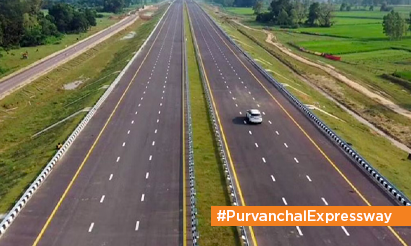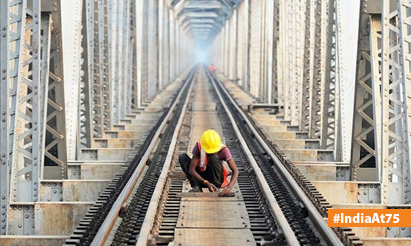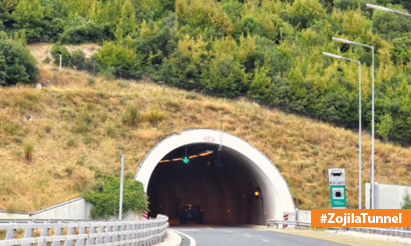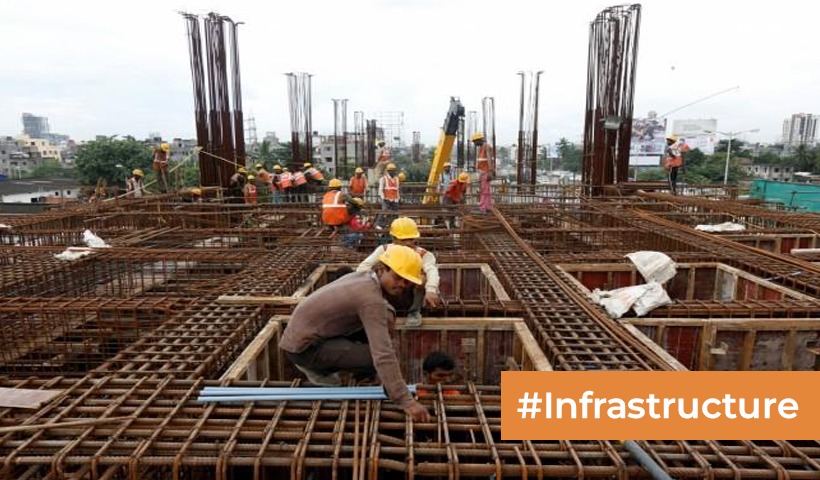Explore the Top 11 Longest Tunnels in India
India, with its diverse topography and ambitious infrastructure projects, has witnessed the creation of several remarkable tunnels that traverse mountains, rivers, and urban landscapes. These engineering marvels not only connect regions but also reduce travel time and enhance connectivity. In this comprehensive exploration, we unveil the top 11 longest tunnels in India, shedding light on their significance, construction, and impact on transportation.
- Atal Tunnel:
- Length: 9.02 kilometers
- Location: Rohtang Pass, Himachal Pradesh
- Significance: Named after the former Prime Minister Atal Bihari Vajpayee, the Atal Tunnel holds the distinction of being the longest highway tunnel in the world at an altitude of over 10,000 feet. It provides a critical all-weather road link between Manali and Lahaul-Spiti Valley, reducing travel time and enhancing accessibility.
- Pir Panjal Railway Tunnel:
- Length: 11.215 kilometers
- Location: Pir Panjal Range, Jammu and Kashmir
- Significance: As part of the Udhampur-Srinagar-Baramulla Rail Link (USBRL) project, the Pir Panjal Railway Tunnel is the longest railway tunnel in India. It facilitates seamless rail connectivity between Jammu and Kashmir, overcoming the challenging terrain of the Pir Panjal Range.
- Natham Tunnel:
- Length: 8.8 kilometers
- Location: Kuthiran, Kerala
- Significance: Nestled in the Western Ghats, the Natham Tunnel is a key component of the Kuthiran Tunnel Project. It aims to decongest the traffic on the busy Thrissur-Palakkad National Highway (NH-544), offering a smoother and safer passage through the mountainous region.
- Chenani-Nashri Tunnel:
- Length: 9.2 kilometers
- Location: Chenani to Nashri, Jammu and Kashmir
- Significance: Part of the prestigious National Highway 44, the Chenani-Nashri Tunnel, also known as the Patnitop Tunnel, is a crucial link connecting Jammu to Srinagar. It significantly reduces travel time and enhances all-weather connectivity, particularly during harsh winter conditions.
- Panchgani Tunnel:
- Length: 2.5 kilometers
- Location: Panchgani, Maharashtra
- Significance: Located in the picturesque Western Ghats, the Panchgani Tunnel is part of the Pune-Satara National Highway. It plays a vital role in facilitating smoother traffic flow through the challenging terrain of the Sahyadri Range.
- Tehri Hydroelectric Tunnel:
- Length: 20.6 kilometers
- Location: Tehri Dam, Uttarakhand
- Significance: Situated beneath the Tehri Dam, this hydroelectric tunnel is a crucial component of the Tehri Hydropower Complex. It channels water from the Tehri Reservoir to the underground power station, harnessing the potential for clean energy generation.
- Banihal-Qazigund Road Tunnel:
- Length: 8.45 kilometers
- Location: Banihal to Qazigund, Jammu and Kashmir
- Significance: Connecting the towns of Banihal and Qazigund, this road tunnel is a vital link on National Highway 44. It facilitates year-round connectivity, overcoming the challenges posed by heavy snowfall in the region.
- Nelamangala Tunnel:
- Length: 587 meters
- Location: Nelamangala, Karnataka
- Significance: Forming part of the Bangalore-Mumbai National Highway (NH-48), the Nelamangala Tunnel is a short yet crucial passage through the rocky terrain. It contributes to the efficiency of the busy highway, ensuring smoother traffic flow.
- Kuthiran Tunnel:
- Length: 1.6 kilometers
- Location: Kuthiran, Kerala
- Significance: A part of the Kuthiran Tunnel Project, this tunnel aims to alleviate traffic congestion on the Thrissur-Palakkad National Highway (NH-544). It is strategically located to enhance connectivity in the region.
- Koteshwar Hydroelectric Tunnel:
- Length: 4.5 kilometers
- Location: Koteshwar Dam, Uttarakhand
- Significance: As an integral component of the Koteshwar Hydroelectric Plant, this tunnel diverts water from the Bhagirathi River to the power station, contributing to Uttarakhand’s power generation capacity.
- Mumbai Metro Line 3 Tunnels:
- Length: Approximately 33.5 kilometers
- Location: Mumbai, Maharashtra
- Significance: The Mumbai Metro Line 3, also known as the Colaba-Bandra-SEEPZ line, features an extensive underground section with multiple tunnels connecting key areas of the city. It is a transformative urban transportation project aimed at easing congestion and improving connectivity in Mumbai.
Significance and Impact:
- Connectivity Enhancement: The construction of these tunnels has significantly improved connectivity in challenging terrains, such as mountainous regions and dense urban areas, reducing travel time and enhancing accessibility.
- All-Weather Accessibility: Tunnels like the Atal Tunnel and the Chenani-Nashri Tunnel ensure all-weather connectivity, overcoming the challenges posed by harsh weather conditions, particularly in regions with heavy snowfall.
- Infrastructure Development: The construction of these tunnels is a testament to India’s commitment to infrastructure development. They not only facilitate smoother traffic flow but also contribute to the overall economic growth of the regions they connect.
- Hydropower Generation: Tunnels associated with hydroelectric projects, such as the Tehri Hydroelectric Tunnel and the Koteshwar Hydroelectric Tunnel, play a crucial role in harnessing the potential for clean energy generation, contributing to India’s power needs.
- Urban Transportation: Tunnels like those in the Mumbai Metro Line 3 are instrumental in improving urban transportation, easing congestion on key routes and providing a faster and more efficient means of commuting within busy urban centers like Mumbai.
- Tourism and Regional Development: Tunnels located in picturesque regions, such as the Pir Panjal Railway Tunnel and the Panchgani Tunnel, contribute to the development of tourism by providing easier access to scenic destinations. This, in turn, stimulates local economies and promotes regional development.
- Strategic Importance: Tunnels like the Banihal-Qazigund Road Tunnel hold strategic importance, especially in regions that require year-round connectivity for both civilian and military purposes. These tunnels enhance accessibility to border areas, bolstering national security.
- Environmental Considerations: The construction of tunnels often involves careful environmental considerations to minimize ecological impact. This includes measures to protect local flora and fauna, maintain water resources, and address the potential impact on air quality.
Challenges and Solutions in Tunnel Construction:
- Geological Challenges: Tunnels often traverse challenging geological formations, such as mountains and rocky terrains. Engineers overcome these challenges through advanced geological surveys, precise drilling techniques, and the use of tunnel-boring machines designed to handle specific conditions.
- Water Seepage and Drainage: In hilly terrains, water seepage into tunnels is a common challenge. Engineers address this by incorporating effective drainage systems, waterproofing measures, and ensuring proper ventilation to maintain optimal tunnel conditions.
- Safety and Emergency Preparedness: Ensuring the safety of tunnel users is paramount. Advanced safety features, including fire detection and suppression systems, emergency exits, and regular safety drills, are integral components of tunnel design and operation.
- Maintaining Air Quality: The construction and operation of tunnels can impact air quality due to factors such as vehicle emissions and ventilation systems. Engineers implement measures to minimize air pollution, including efficient ventilation systems and periodic maintenance.
- Sustainable Construction Practices: Tunnels often require extensive construction activities, and sustainable practices are crucial to minimize environmental impact. This includes the use of eco-friendly construction materials, waste management strategies, and reforestation efforts in affected areas.
Future Prospects and Emerging Trends:
- Smart Tunnel Technologies: The integration of smart technologies, such as sensor networks, real-time monitoring systems, and data analytics, is becoming a trend in tunnel construction. These technologies enhance safety, optimize traffic flow, and provide valuable insights for maintenance.
- Innovations in Tunnel Boring Machines (TBMs): Ongoing advancements in tunnel boring machines contribute to faster and more efficient tunnel construction. TBMs equipped with state-of-the-art drilling technologies reduce construction timelines and improve overall project efficiency.
- High-Speed Rail Tunnels: As India explores the implementation of high-speed rail networks, the construction of long tunnels is likely to increase. These tunnels will play a crucial role in connecting major cities and reducing travel time between key economic centers.
- Underwater Tunnels: With coastal and riverine regions requiring enhanced connectivity, the construction of underwater tunnels is gaining traction. These tunnels provide efficient transportation links and contribute to the overall development of coastal areas.
The top 11 longest tunnels in India stand as remarkable achievements in engineering and infrastructure development. From traversing mountain ranges to facilitating urban transportation, these tunnels play a crucial role in shaping the nation’s connectivity and economic progress. As India continues to invest in ambitious infrastructure projects, the evolution of tunnel construction techniques and the integration of innovative technologies will contribute to a future where seamless, efficient, and sustainable transportation becomes a reality. Each tunnel, with its unique challenges and solutions, reflects the nation’s commitment to overcoming geographical barriers and fostering progress for generations to come.




